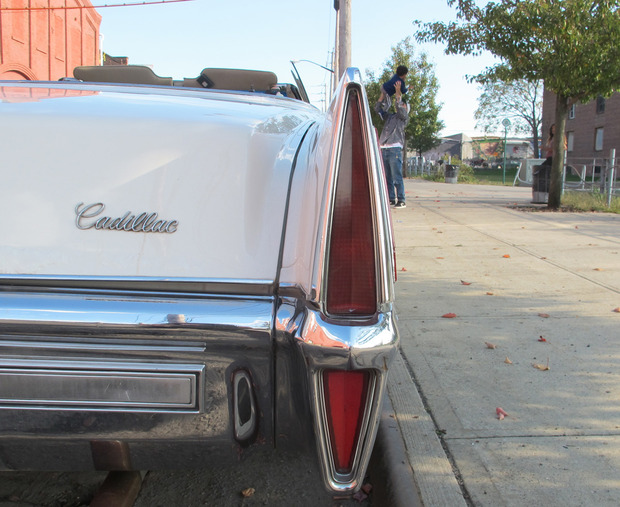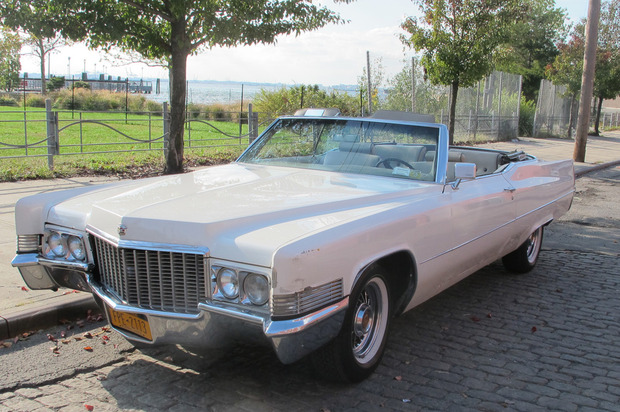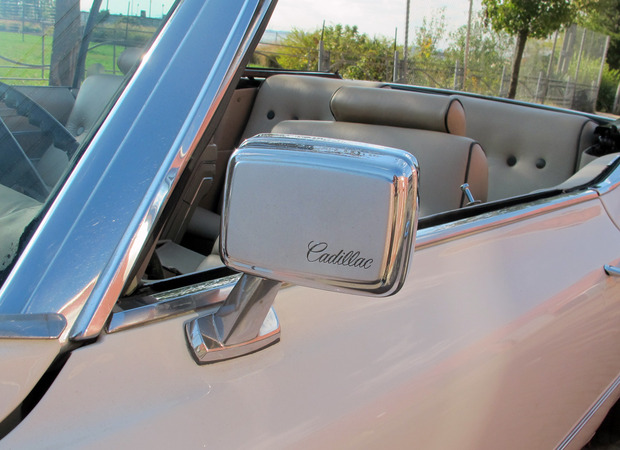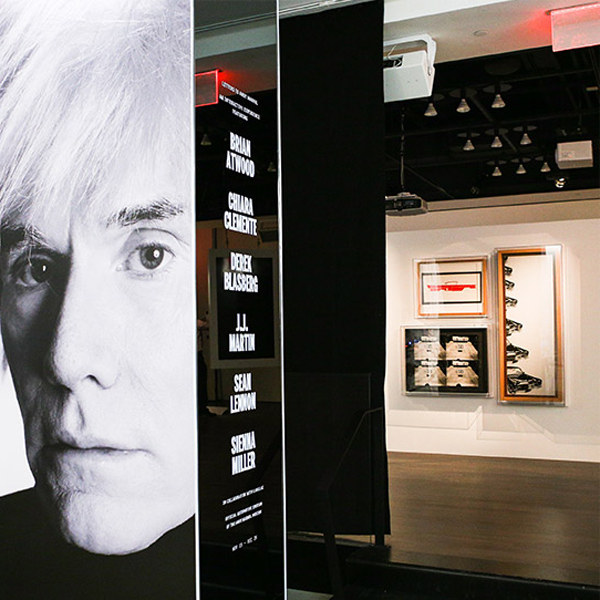Song of the Car: 1970 Cadillac de Ville Convertible
Cruising through Brooklyn in the show-stealing Americana land yacht with salsa tunes blaring


Skip the double decker tour buses. There’s no better way to see elegant Fort Greene, Brooklyn on a sunny fall day than through the wide windshield of a 1970 Cadillac de Ville convertible. Lean back and lean low on leather seats and embrace the essence of NYC’s biggest and most flavorful borough in a Brooklyn-style big car.
Cadillac introduced the Coupe de Ville in 1949. By the late 1960s, the de Ville had lost most of its fabulous ’50s fins, but hung onto a smooth suggestive flair in its rear quarters. The last de Ville convertible was made in 1970, the same year the company muscled up the series with its largest V8 engine to date in order to add the extra kick to maneuver its brawny 4,660 pound bodyweight.

We tested a de Ville that claims particular Fort Greene pedigree. When it’s not coasting the Brooklyn streets, Sean Meenan’s vintage convertible is almost always parked on the corner of Fulton Street and leafy brownstone-lined South Portland Avenue right in front of the seasonal solar-powered café Habana Outpost. Meenan founded Habana Outpost a decade ago as the sister spot to Manhattan’s Café Habana where his ’70 Cadillac first gained notoriety.

In 1998, Meenan opened Café Habana on Prince Street in SoHo, inspired by the lore of a Mexico City luncheonette that served Cuban food to revolutionaries. His neighbors nicknamed him Cadillac Boy as he routinely parked the eye-catching land yacht on the corner of Mulberry and Prince—once mob boss John Gotti’s designated parking spot. The car is an essential character in Meenan’s New York success story. Neighborhood kids treated it as a playground. Sometimes, Meenan invited a dozen kids to pile in and head up to the movie theater on 31st Street.

The authorities often had it towed. For a while, the top wasn’t working, which meant that sometimes, Meenan drove back from his Brooklyn boxing gym through pouring rain to the amusement of his downtown neighbors. Once, when the battery failed, he left it parked for several weeks. When he finally went to retrieve it, he discovered that someone had moved in and redecorated the interior. When he approached the man, he said, “Hey man this is my car.” And the fellow replied, “Man, that’s my house.”
The debonair drop-top de Ville harkens back to the era when New York had audacity and attitude. In those days, Cadillac bumpers were hot items among car thieves—except for Cadillacs parked on specific downtown blocks. It wasn’t worth paying the price for messing with a wiseguy’s Caddy.
On the last of the warm autumn days, before Habana Outpost closes down for the winter, the Fania All-Star’s soundtrack wafts from the de Ville’s stereo onto the Fort Greene streets in the spirit of the late Cheo Feliciano, a prominent voice for Latin Music in New York during the ’70s. It’s a song and a car that’s a cultural mashup that makes sense in Brooklyn, a place that’s the definition of a cultural melting pot. The de Ville swings and sways to the rhythm of the timbales like a magic carpet down Fulton Avenue. “Once you get in the car and go, there’s no better place. I have so much love for the car, I can’t get rid of it.”
Song of the Car matches music with automobiles, old and new. Appearing fortnightly on Cool Hunting, each feature takes a look at a car’s distinct personality and pairs it with a suitable song.
Images by Tamara Warren












